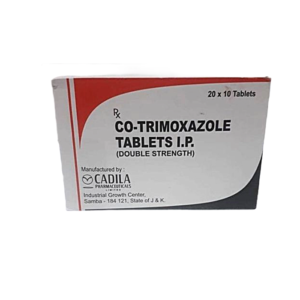Product Specifications
| . | Standard | Physical Form | Tablet |
| Grade | A | Function | Anti-Bacterial |
| Usage | Antibiotic | Ingredients | Tablet |
| Storage Instructions | Store at Dry And Cool Place | Dosage | As Per Direction By Physician |
Product Description
Ciprofloxacin is an antibiotic medication that is used to treat a variety of bacterial infections. Here is a full description of ciprofloxacin tablets:
Generic Name: Ciprofloxacin
Classification: Ciprofloxacin belongs to a class of antibiotics known as fluoroquinolones.
Description: Ciprofloxacin tablets come in various strengths and forms, including regular tablets, extended-release tablets, and oral suspension (liquid). The tablets are usually available in different strengths, typically ranging from 250 mg to 1000 mg.
Indications: Ciprofloxacin is prescribed by healthcare professionals to treat various bacterial infections, including:
- Urinary tract infections (UTIs)
- Respiratory tract infections
- Skin and soft tissue infections
- Bone and joint infections
- Gastrointestinal tract infections
- Typhoid fever
- Certain sexually transmitted infections, like gonorrhea
- Anthrax (in specific situations, as it is an antibiotic of choice in such cases)
Mechanism of Action: Ciprofloxacin works by inhibiting the growth and replication of bacteria. It does this by interfering with the bacterial DNA, preventing it from replicating and ultimately killing the bacteria responsible for the infection.
Dosage: The dosage of ciprofloxacin varies depending on the type and severity of the infection, as well as the patient’s age and overall health. It is crucial to follow the prescribed dosage and duration of treatment as instructed by a healthcare provider.
Administration: Ciprofloxacin tablets should be taken orally with a full glass of water. They can be taken with or without food, but it’s usually best to follow the healthcare provider’s instructions regarding this.
Precautions: Some important precautions to consider when taking ciprofloxacin include:
- Inform your healthcare provider about any allergies or previous adverse reactions to antibiotics.
- Avoid taking ciprofloxacin with dairy products or calcium-fortified juices, as they can reduce its absorption.
- It’s essential to complete the full course of treatment even if you start feeling better before the medication is finished.
- Ciprofloxacin may interact with other medications, so inform your healthcare provider about all the drugs you are taking.
- Ciprofloxacin may increase the risk of tendonitis and tendon rupture, particularly in older adults.
Side Effects: Common side effects of ciprofloxacin may include nausea, diarrhea, headache, and dizziness. If you experience severe side effects like tendon pain or swelling, rash, or difficulty breathing, seek medical attention immediately.
Storage: Store ciprofloxacin tablets at room temperature, away from moisture and heat. Keep them out of reach of children.
Duration of Treatment: The duration of treatment with ciprofloxacin depends on the specific infection being treated. Always complete the full course of antibiotics as prescribed by your healthcare provider, even if symptoms improve before the medication is finished.
It’s important to note that ciprofloxacin should only be taken under the supervision and prescription of a qualified healthcare provider. It should not be used to treat viral infections like the common cold or flu, as it is only effective against bacterial infections.






